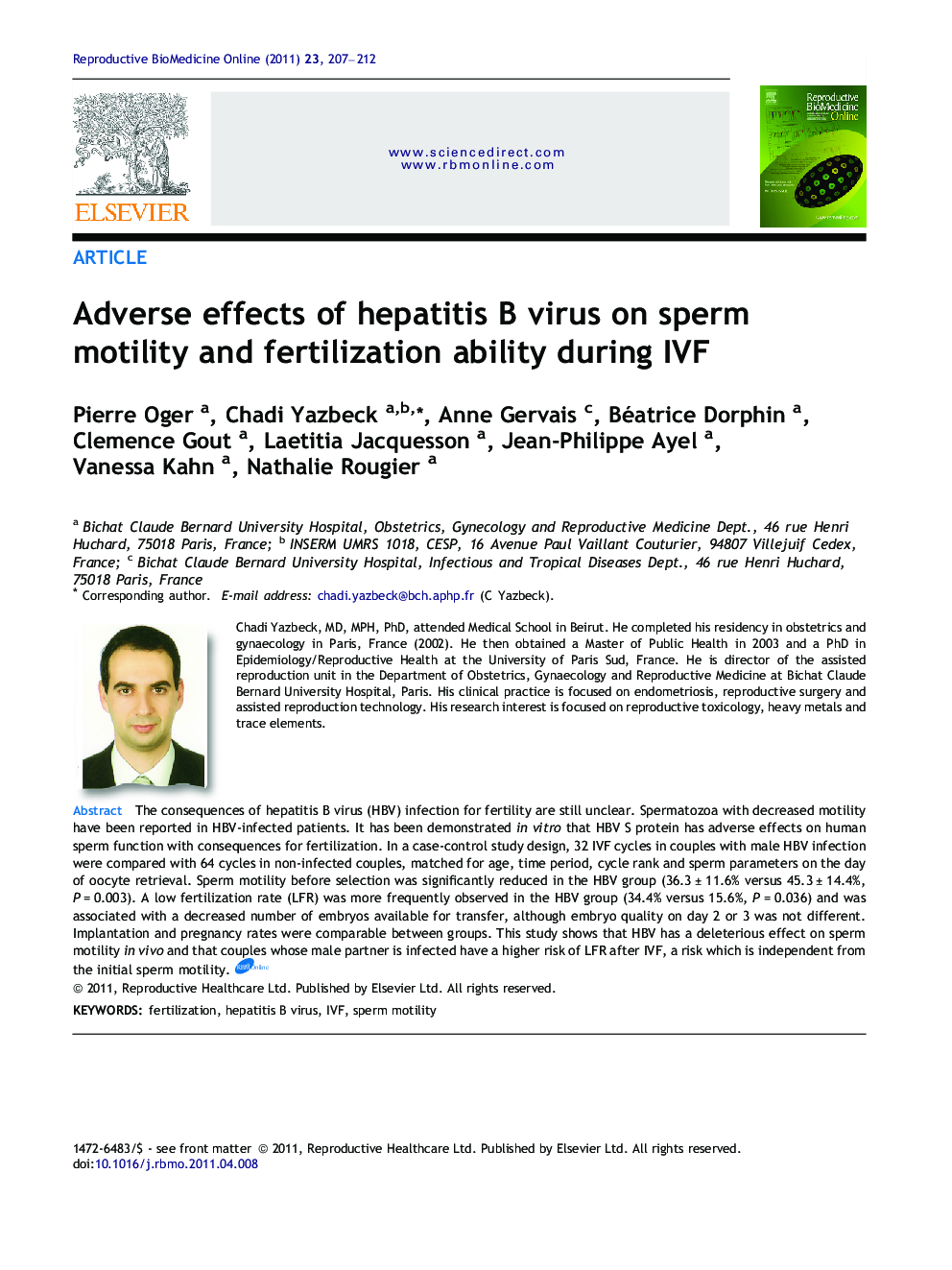| کد مقاله | کد نشریه | سال انتشار | مقاله انگلیسی | نسخه تمام متن |
|---|---|---|---|---|
| 6189210 | 1256752 | 2011 | 6 صفحه PDF | دانلود رایگان |

The consequences of hepatitis B virus (HBV) infection for fertility are still unclear. Spermatozoa with decreased motility have been reported in HBV-infected patients. It has been demonstrated in vitro that HBV S protein has adverse effects on human sperm function with consequences for fertilization. In a case-control study design, 32 IVF cycles in couples with male HBV infection were compared with 64 cycles in non-infected couples, matched for age, time period, cycle rank and sperm parameters on the day of oocyte retrieval. Sperm motility before selection was significantly reduced in the HBV group (36.3 ± 11.6% versus 45.3 ± 14.4%, P = 0.003). A low fertilization rate (LFR) was more frequently observed in the HBV group (34.4% versus 15.6%, P = 0.036) and was associated with a decreased number of embryos available for transfer, although embryo quality on day 2 or 3 was not different. Implantation and pregnancy rates were comparable between groups. This study shows that HBV has a deleterious effect on sperm motility in vivo and that couples whose male partner is infected have a higher risk of LFR after IVF, a risk which is independent from the initial sperm motility.The consequences of hepatitis B virus (HBV) infection on fertility are still unclear. Spermatozoa with decreased motility have been reported in HBV-infected patients. It has been demonstrated in vitro that a protein of HBV has adverse effects on human sperm function with consequences for fertilization. In a case-control study design, 32 IVF cycles in couples with male HBV infection were compared with 64 cycles in non-infected couples, according to patients' age, time period, cycle rank and sperm parameters on the day of oocyte retrieval. Spermatozoa motility before selection was significantly reduced in the HBV group (36.3 ± 11.6% versus 45.3 ± 14.4%, P = 0.003). A low fertilization rate (LFR) was more frequently observed in HBV group (34.4% versus 15.6%, P = 0.04) and was associated with a decreased number of embryos available for transfer, although embryo quality on day 2 or 3 was not different. Pregnancy rates were comparable between groups. This study shows that HBV has a deleterious effect on sperm motility in vivo and that couples whose male partner is infected have a higher risk of LFR after IVF, risk which is independent of the initial spermatozoa motility.
Journal: Reproductive BioMedicine Online - Volume 23, Issue 2, August 2011, Pages 207-212